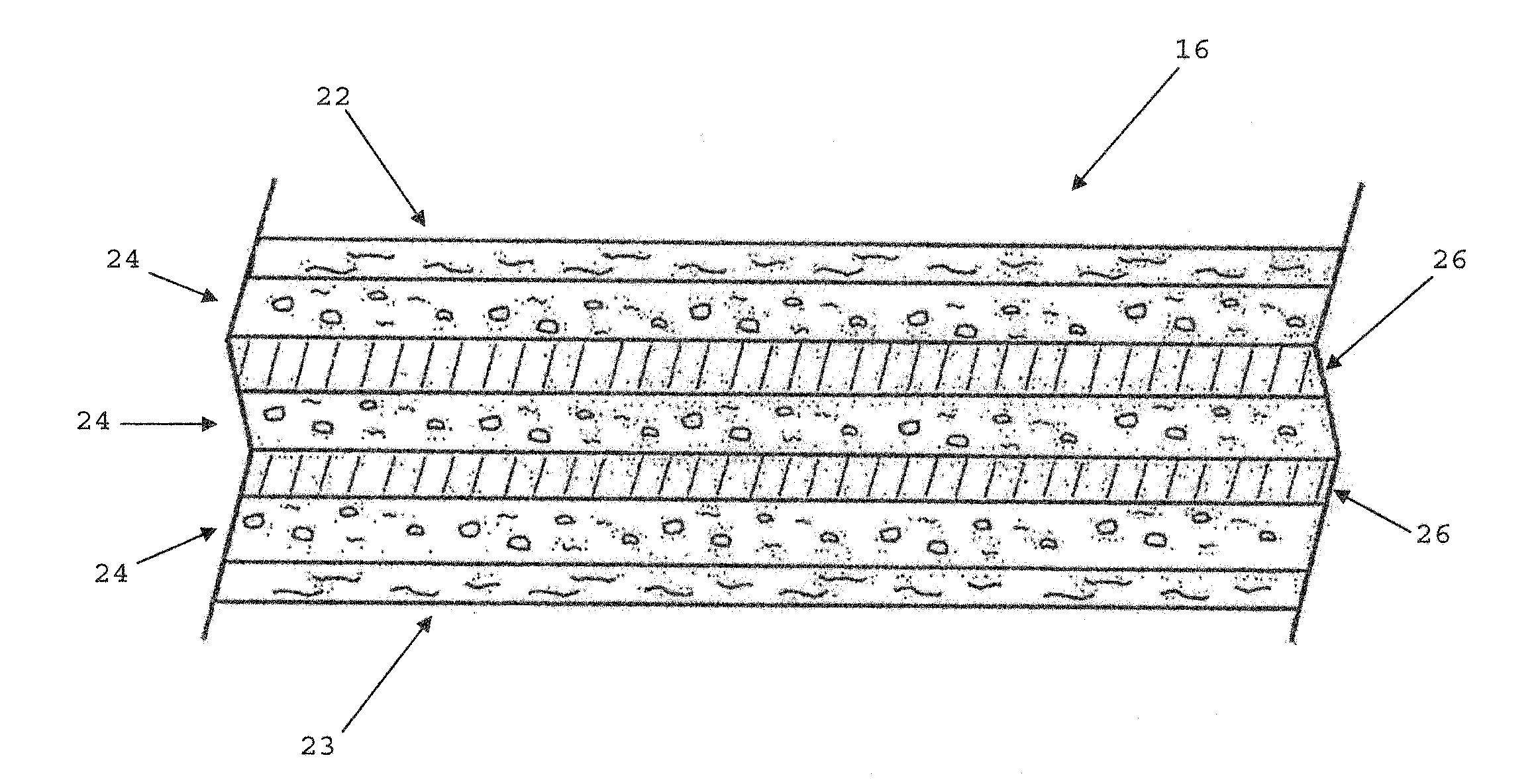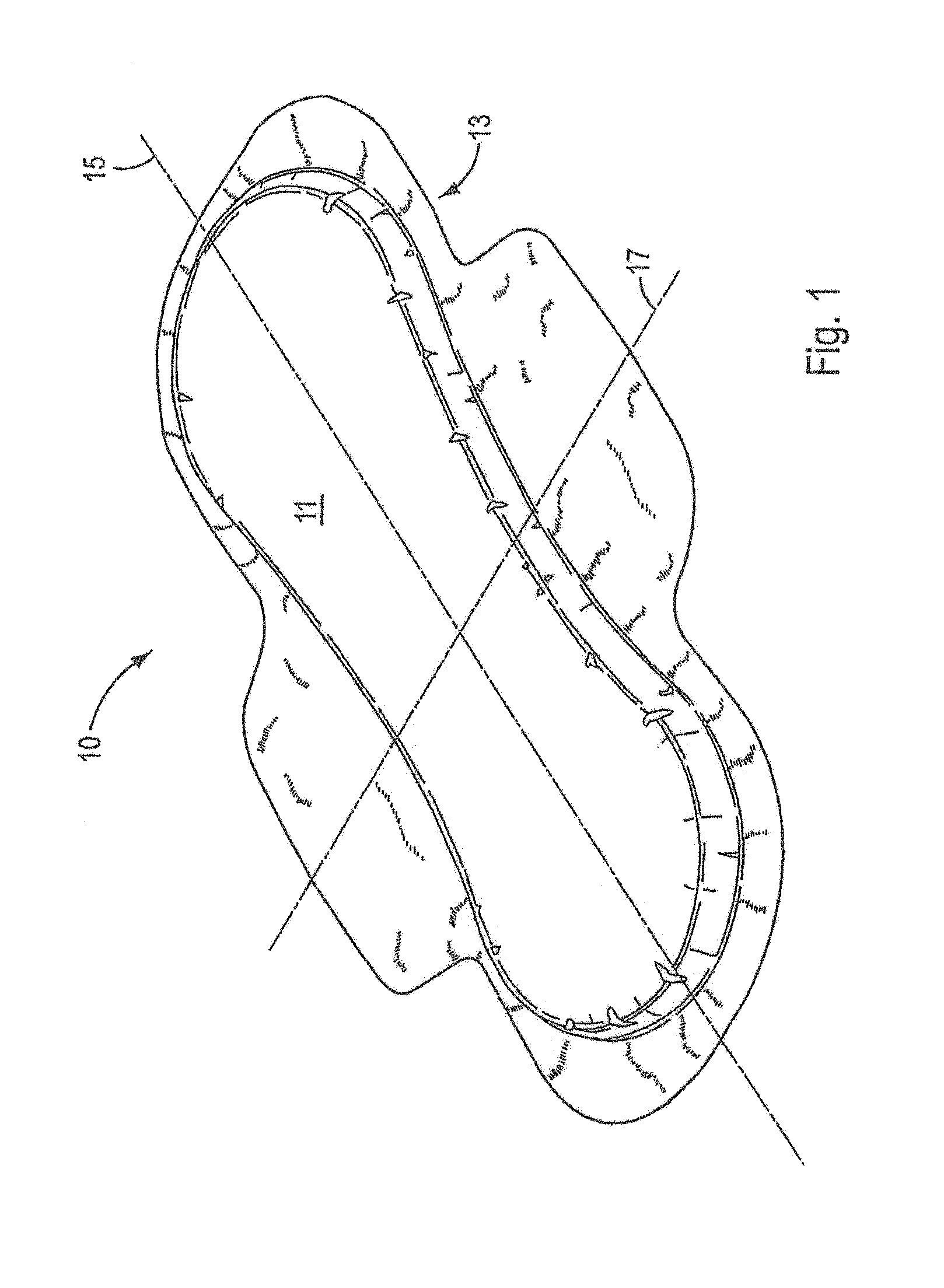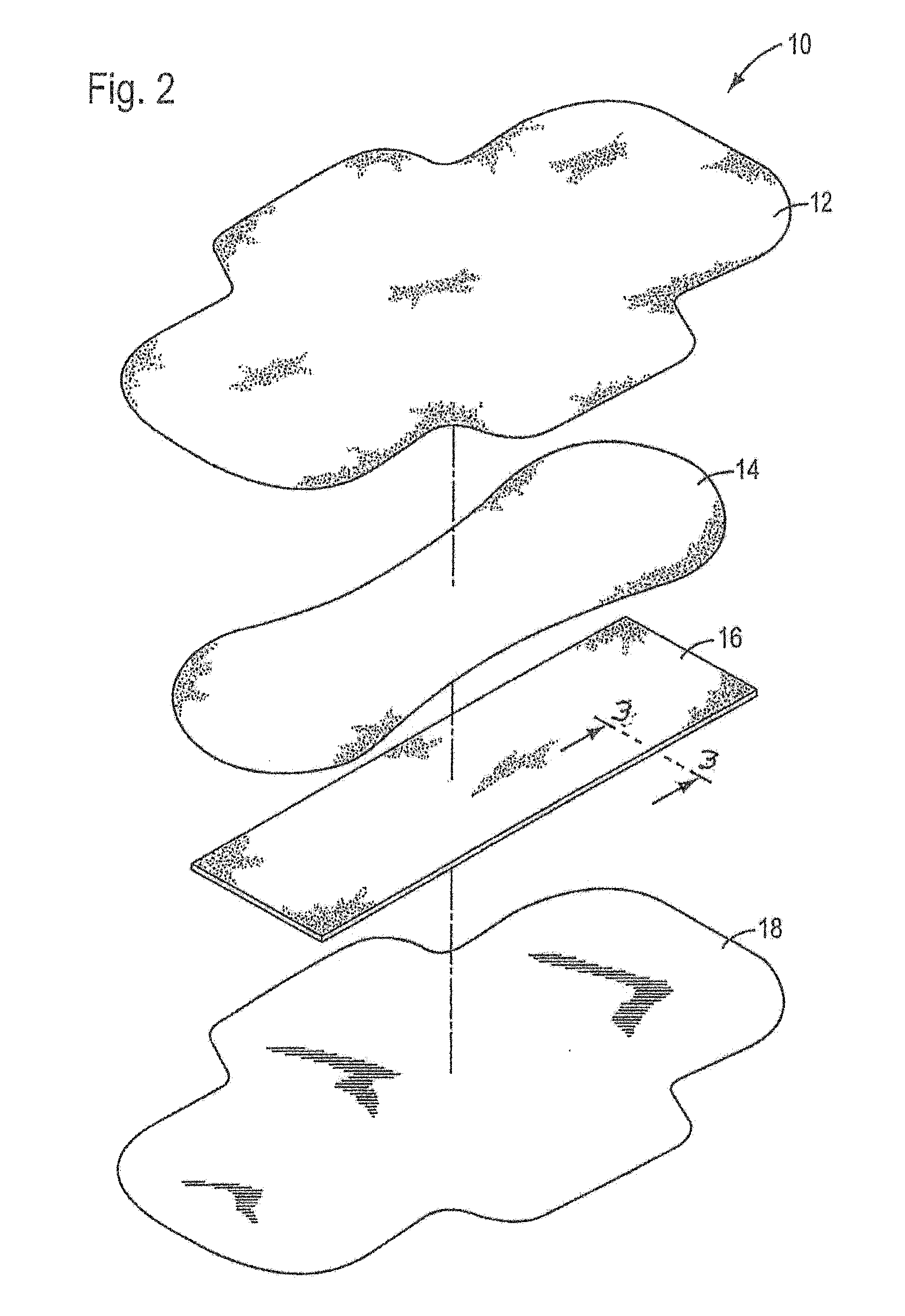Absorbent laminate with multiple substrates
a technology of absorbent laminates and substrates, applied in textiles and papermaking, medical science, papermaking, etc., can solve the problem that laminates do not dry the adjacent acquisition layer as well, and achieve the effect of weak tensile strength and higher tensile strength
- Summary
- Abstract
- Description
- Claims
- Application Information
AI Technical Summary
Benefits of technology
Problems solved by technology
Method used
Image
Examples
example 1
[0046]A laminate of the present invention was made as described above using 17 gsm 3995 tissue from Dunn Paper as the facing layers, and 17 gsm 3008 tissue from Dunn Paper as the highly porous middle layer. The first and second layers of SAP disposed between the highly porous center tissue and the first or second facing tissue layers each contained roughly 35 gsm of SA65s from Sumitomo Seika and each layer was mixed with approximately 2 gsm E60W hot melt adhesive fibers from Savare, ejected by an ITW Dynatec UFD Dynafiber glue applicator head. The resulting material had a basis weight target of 125 gsm, and a SAP content target of around 70 gsm. The highly porous tissue layer material has a Frazier Porosity of around 350 cu ft / min / sq ft. The facing layers have a Frazier Porosity of around 210 cu ft / min / sq ft. A trial sample of the material of Example 1 had an average tensile strength of 15N / 50 mm and an average caliper of 0.97 mm.
example 2
[0047]A laminate of the present invention was made as described in Example 1 above using similar materials and steps, except the SAP content was around 38 gsm in each SAP layer, and the highly porous middle layer was made from 1113 Creped Wadding commercially available from Dunn Paper, and elongated under tension in the machine direction pulling the crepe out of the tissue thus opening the holes in the sheet until it had a basis weight of around 17 gsm. While Frazier porosity data is not available for this elongated creped wadding, a piece of 3008 tissue of the type used in Example 1 above was supported by 18 mesh window screen placed over the hose end of a shop vacuum and the available vacuum drawn through the sample produced a 4.7-inch H2O pressure drop read on a Magnahelic gauge. The 3008 tissue sample was replaced by a sample of 1113 tissue, elongated as described in example 2 and this yielded a pressure drop of 2.0 inches H2O, suggesting the elongated 1113 tissue is more porous...
PUM
| Property | Measurement | Unit |
|---|---|---|
| Length | aaaaa | aaaaa |
| Permeability | aaaaa | aaaaa |
| Transport properties | aaaaa | aaaaa |
Abstract
Description
Claims
Application Information
 Login to View More
Login to View More - R&D
- Intellectual Property
- Life Sciences
- Materials
- Tech Scout
- Unparalleled Data Quality
- Higher Quality Content
- 60% Fewer Hallucinations
Browse by: Latest US Patents, China's latest patents, Technical Efficacy Thesaurus, Application Domain, Technology Topic, Popular Technical Reports.
© 2025 PatSnap. All rights reserved.Legal|Privacy policy|Modern Slavery Act Transparency Statement|Sitemap|About US| Contact US: help@patsnap.com



